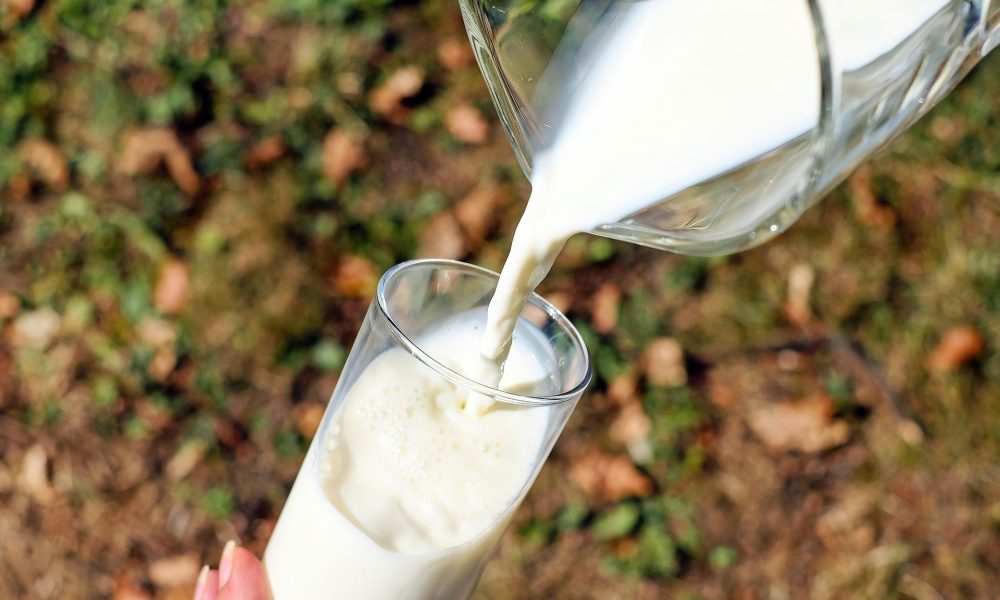
Plums, The Health Enhancer You Keep Overlooking
Plums, The Health Enhancer You Keep Overlooking Lately, I’ve been quite head over heels for plums. I’ve regularly devoured, posted on social media, and experienced

Being lactose intolerant sucks. You feel like you can’t enjoy mouthwatering dairy foods like ice cream or cheese the same way your friends do. If you even think about drinking some milk, your life suddenly becomes an unpleasant series of violent farts, bloating, and explosive diarrhea.
Most people’s solution is to avoid dairy completely, but as I discussed in part 1 of this article, dairy is deeply beneficial for health and body composition. It’s also quite difficult to meet optimal nutrient levels, particularly calcium without dairy. Calorie for calorie, dairy provides more protein, calcium, potassium, phosphorus, magnesium and zinc than most foods (7).
Furthermore, research shows dairy avoiders don’t end up getting sufficient calcium and vitamin D from other sources (6).
Fortunately, most people aren’t completely doomed to choose between discomfort and health. There are many ways to still enjoy dairy even if you’re lactose intolerant. You really can have your cake and eat it too.
Being lactose intolerance means your body fails to produce enough of the enzyme lactase which is crucial to breaking down the sugar in milk known as lactose (1).
As you advance through adulthood, most people start to lose their ability to produce lactase. Only about a quarter of the adult population retain their lactase known as lactase persistence (2). For the rest of us, lactase activity reduces, making a majority of people to some extent, lactose intolerant.
This is commonly seen in countries with decreasing dairy and Vitamin D consumption (3,6).
So while it’s likely you don’t have as much lactase as when you were 12 years old, science shows us you have more than you think.
Research shows people who often think they’re extremely lactose intolerant usually aren’t. One meta-analysis found people who claim to be lactose intolerant generally reacted just fine to both lactose and placebo (4). A 2010 systematic review found self-reported intolerance is quite inaccurate as actual testing produced results inconsistent with self-reported diagnosis (5).
So while you might be lactose intolerant, it’s likely not that bad. Small doses of lactose are perfectly tolerable in most lactose intolerant people (2,3,8,9).

Scientific research suggests the following tips, so you’re not destined to a life without dairy (9).
It also doesn’t hurt to supplement or eat more calcium rich foods as that’s the biggest issue with limited dairy consumption. Foods like fortified calcium drinks, dark leafy greens, fish bones, tofu, almonds, chia seeds, and legumes are all pretty good choices.
Above are great tips for managing lactose intolerance, but we have various lines of evidence that reversing lactose intolerance (at least to some extent) is possible.
One study took 20 lactose intolerant adults, split them into 2 groups and put them through 2 different condition in random order (13).
In both groups, symptoms had significantly decreased following progressive lactose ingestion.
This indicates your body is adapting and slowly tolerating lactose better especially if you slowly progress the dosage over time. Our bodies are amazing entities aren’t they?
The main proposed explanation is your gut bacteria. If you’re lactose intolerant, you might not have enough lactase to break down lactose, but your bacteria is able to when it’s optimized for this. Generally speaking, the healthier and more diverse your microbiota is, the less lactose intolerance hinders you (14).
This might also explain why people seem lactose intolerant. Their gut health just sucks from eating the average crappy American diet.
To improve your colonic microbiota to where symptoms are relieved, yogurt and probiotics are quite effective (15,16,17). Fiber is also critical for optimal gut health, so don’t forget to include enough in your diet as well (18).
So if you want to reverse your lactose intolerance, at least to some extent, it comes down to the following:
Give some of these tips a try if you’re lactose intolerant. Even the worse of scenarios can usually be improved with lactase drops or probiotic supplements. Don’t forget to send me a thank you email when you’re finally enjoying some cheese while laughing maniacally at your previous symptoms.
Sign up for AwesomeFitnessScience Weekly. You’ll get juicy insider secrets, updates, and stories.

Plums, The Health Enhancer You Keep Overlooking Lately, I’ve been quite head over heels for plums. I’ve regularly devoured, posted on social media, and experienced

Newbie gains is the “enchanted” window of opportunity where beginner lifters can pack on muscle at remarkably fast rates.

The Lifter’s Guide to Warming Up Warming up is like saving for retirement. We all know it’s important, but we don’t exactly know why or